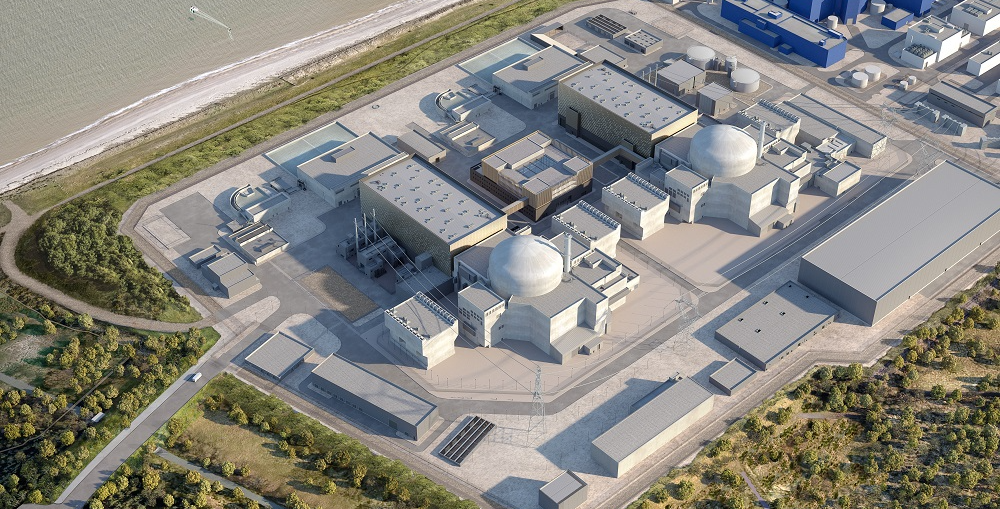Proximo Weekly: ILX Fund I – six months on and no longer counting
As ILX Fund I hits its $1.05 billion target in commitments, co-financing loans with MDBs and DFIs in sectors like renewables, energy transition, sustainable industry and infrastructure are some of the key drivers that are attracting in pension funds to this blended finance debt product.

Amsterdam-based fund management group ILX’s emerging market-focused private credit fund – ILX Fund I – recently reached its target of $1.05 billion in commitments from pension fund managers within just six months of announcing the fund’s launch. The relatively rapid fundraise for a new product is surprising given that according to Global Impact Investing Network (GIIN), impact investing still accounts for less than 3% of total pension fund investments which total $50 trillion worldwide.
The ILX fundraising comprised Achmea Investment Management, on behalf of Pensioenfonds Vervoer, making a $300 million commitment in June to Fund I following a cornerstone investment by APG Asset Management (APG) in January 2022. Dutch pension provider APG had invested $750 million on behalf of its pension fund clients ABP and bpfBOUW in the new fund.
ILX Fund I’s investment strategy includes selectively co-investing with a broad range of leading DFIs, providing investors with both the desired diversification and scale, and relying on the expertise and experience development banks have in the emerging markets. The funding will be invested in private-sector loans arranged by leading multilateral development banks (MDB) and other DFIs, such as the ADB, AfDB, EBRD, IDB-Invest, IFC, and FMO.
This is not investment under the guarantee umbrella or benefitting from a donor or DFIs provided first loss. The fund creates a portfolio of development finance assets in the form of loan participations and invests pari passu with the development bank in their project as a lender. The investor, therefore, has the same level of risk and return as the development banks they co-invest with.
Earlier this year, the European Bank for Reconstruction and Development (EBRD) and ILX agreed on a partnership to mobilise €500 million of European pension fund capital. The investments will be made to support the transition to more sustainable, low-carbon economies across the EBRD regions. ILX will be investing on behalf of European pension providers, such as APG Asset Management. Under the new partnership, the EBRD and ILX, will launch an Institutional Co-Investment Programme. It will have a target of €500 million over the next five years, supporting the EBRD’s ambition to double private co-financing by 2025 with a focus on climate action. ILX and FMO have also signed a memorandum of understanding to increase mobilisation in FMO’s key sectors (energy, agribusiness, and financial institutions).
Long-term goals
The fiduciary mandates of several pension funds are seen as compatible with impact investing, owing to its long-term returns and risks. While pension funds manage assets for a long period of time – since employees receive their pensions after a few decades of investing – impact investing seeks to solve long-term SDG goals like climate change and food security. Long-term investors, such as pension funds, are therefore – on paper – the perfect partners for big-picture investments.
This compatibility is being reflected in impact investment trends. According to Manfred Schepers, co-founder and CEO of ILX, among the key trends observed in the pension funds’ investment market currently is the desire to allocate funds at scale, investing in projects worth $100 million or more. “They are also looking for real measurable impact on detailed SDG metrics,” says Schepers.
While financial performance benchmarks, which are key to investor success, are commonplace in investing, there has not been a standardised way of comparing and benchmarking progress on the basis of impact. Lack of uniform and comparable metrics, insufficient data in the emerging markets, and the qualitative nature of Sustainable Development Goals like quality education (SDG 4) are among the biggest hurdles in impact evaluation. MDBs and DFIs are better placed to provide impact measurement in the emerging markets because of their local market expertise and presence in these regions. “Provision of SDGs and climate-related data is key,” says Schepers. “Private MDB debt can make a significant contribution here.”
According to Schepers, pension funds are looking for reputable partners to mitigate risks – legal, ESG, political, etc – and a manager who selects high-quality investments. “The ILX strategy, which involves co-financing with the MDB/DFIs, enables this,” he says. The benefit for ILX is the possibility to work with multiple MDBs and DFIs across projects, sectors, and regions. “We can work on investments across sectors and regions for which the DFIs are seeking co-financing. We will build a portfolio for our investors which involve the different MDBs and DFIs. What is most important for our investor is diversification, which means we can invest from Asia to Latin America, and across industries and SDGs,” adds Schepers.
The advantage of diversifying the portfolio is not only addressing multiple SDGs but also distributing risk across regions and sectors, thereby reducing the risk for the investors. “The diversification in this development finance asset class does not diminish potential returns in contrast to private equity or actively managed bond portfolios,” says Schepers. “ILX provides private debt stable returns with low volatility, and provides diversification.”
Replicability of investment model
ILX will focus on four key investment themes to directly address SDG targets and the key objectives of climate mitigation and adaptation: energy access and clean energy, sustainable industry and infrastructure, inclusive finance, and food security. “ILX strategy has a low correlation with the typical EM bond indices – or other indices for that matter – and hence provides real diversification,” adds Schepers. “Pension funds currently have little allocation to private debt in their EM debt portfolios, if any.”
Among the central tenets of ILX’s model of mobilisation is the capacity to replicate the method repeatedly, or at least on paper to a much larger scale, which is an important draw for pension funds looking to make impact investments. “Because we are investing pari passu, which means we are not asking the development bank for any guarantees or any first loss, ILX can replicate this co-financing method all the time,” says Schepers.
The replicability, however, does also depend on the pipeline of projects and on the level of return generated across investments, which Schepers explains would be the same as what development banks earn on their loans. The key challenge, however, is to find bankable projects at scale, which can help mobilise private capital. “This is what the MDBs are uniquely placed to do,” adds Schepers. Therefore, the next steps for ILX would be to invest the commitments made by pension funds like Pensioenfonds Vervoer, ABP and bpfBOUW, and build up an attractive portfolio across the MDBs, regions, and sectors. “Our pipeline is very robust, close to $1 billion and we will look to make approximately 20 commitments this year,” says Schepers.
Selected news articles from Proximo last week
Update on Calgary Airport - Banff rail proposal
Liricon Capital and Caisse de depot et placement du Quebec (CDPQ) portfolio company Plenary Americas have provided an update to their unsolicited PPP proposal for the Calgary Airport – Banff Rail (CABR) project.
EUROPE
InstaVolt raises £110m for UK EV charging projects
InstaVolt has reached financial close on a £110 million financing to expand the company's network of EV charging points across the UK.
ASIA-PACIFIC
The Philippines awards 2GW of renewable capacity
The Philippines’ Department of Energy (DOE) has awarded 19 renewable energy contracts after conducting the first round of the Green Energy Auction Program (GEAP).
MIDDLE EAST & AFRICA
SWPC pre-qualifies bidders for Al Ahsa ISWR
Saudi Water Partnership Company (SWPC) has announced the pre-qualified bidders for The Eastern Province project & Al-Ahsa Independent Strategic Water Reservoir (ISWR).
SOUTH AMERICA
Sanepar opens consultation for Parana wastewater PPP
Parana's state-owned water and waste management company Sanepar has published a PPP proposal for universal sewage disposal in the Centre-Coast region of the Brazilian state, under a 24-year concession.
The Proximo Membership
Join a brand new community of project finance professionals getting unrivalled access to unique analysis, market data and a global portfolio of expert industry events in the energy and infrastructure space. Click here to find out more




